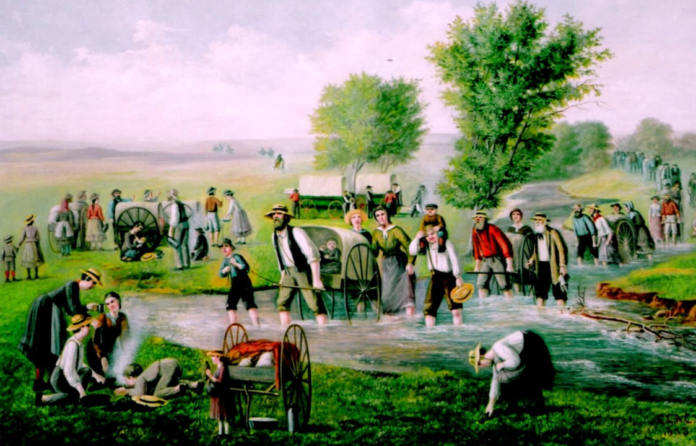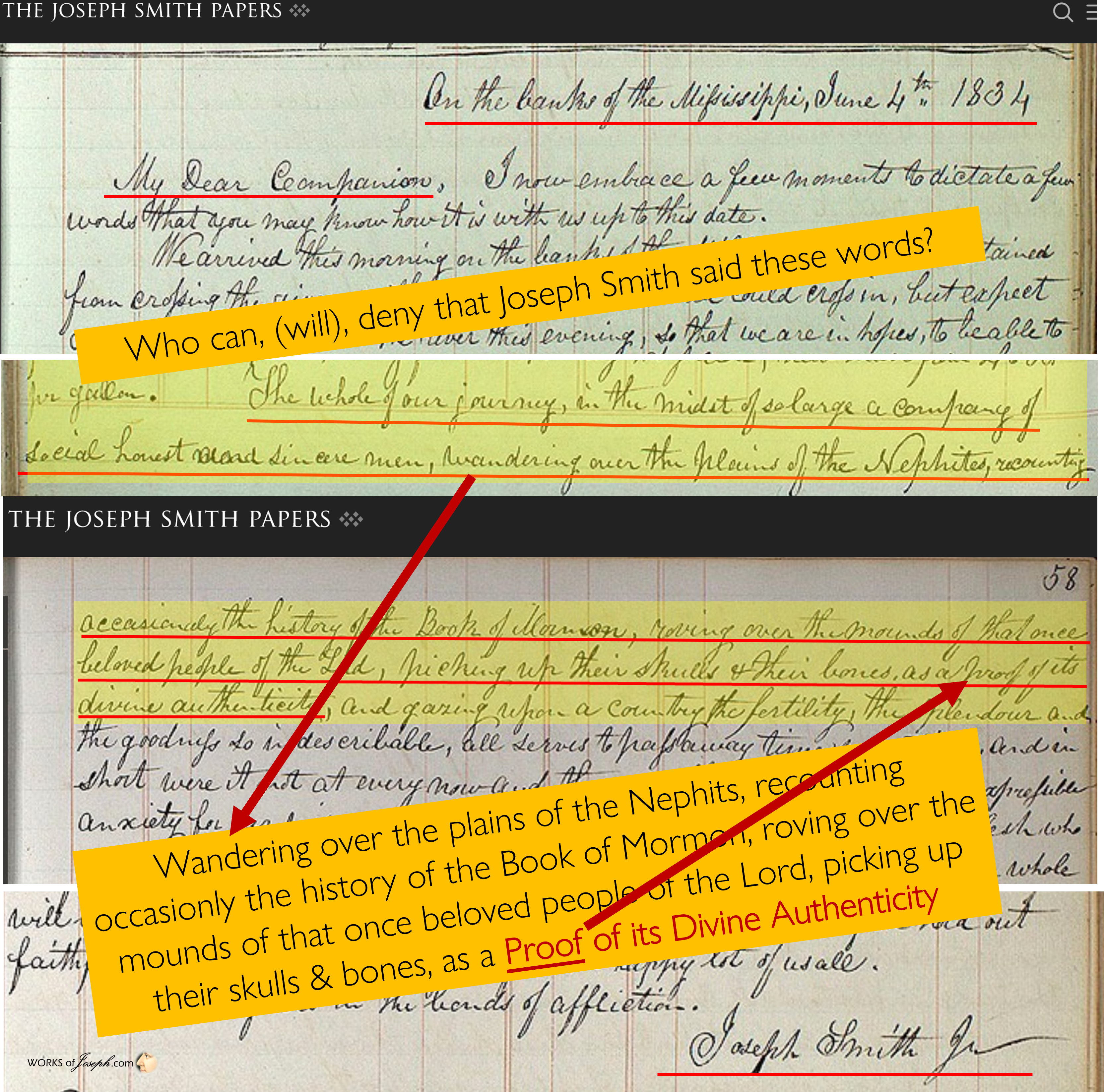
Allen C. Christensen. Before Zion: An Account of the Seventh Handcart Company. Springville, Utah: Council Press, 2004. x, 356 pp.
The mention of the Mormon handcart trek west inevitably brings associations of the ill-fated Willie and Martin handcart companies. Theirs was a tragic tale, filled with suffering, starvation, and death as they sought to make their way to Utah. These two companies, however, were only two of ten who came to Utah between 1856 and 1860.
Allen Christensen has written the history of the seventh handcart company, which traveled farther and faced its own challenges to reach Zion.
This company has been largely unknown, not only overshadowed by the great tragedy of the Martin and Willie companies but also because it was made up primarily of Scandinavians. Hence, their story was less accessible to English speakers. Christensen, a great-grandson of company member Niels Christensen, preserves both the story and the legacy of this company
through the use of company member journals, letters to family members, and histories written about the church and Scandinavia.
Christensen’s purpose is to portray these pioneers’ emigration as “an eloquent testament to their acceptance of the divinity of the restoration of the Church of Jesus Christ” (136).
In the first part, “Scandinavian Beginnings,” Christensen sets the stage for the departure of the Seventh Company by describing missionary efforts in Scandinavia during the early 1850s. While the work was slow at first, given the power of the Lutheran clergy, the missionaries began baptizing converts, who in turn began planning on going to Zion. Saints from Norway and Sweden sailed to Copenhagen, where they joined with Danish converts in sailing to Liverpool on April 17, 1857, during the first leg of their long voyage. They landed in Liverpool on April 22 and left for America three days later, landing in Philadelphia on May 30 and traveling by train to Iowa City.
The second part of the book, “Handcarts West,” covers their departure from Clear Creek, Iowa, on June 12 under the direction of Captain Christian Christiansen. Their travel coincided at times with the march of the Utah Expedition before the tired pioneers pushed hard to get ahead of Johnston’s Army. They reached the Salt Lake Valley on Sunday, September 13, grateful for their safe arrival. After the company’s arrival, the members began settling in different areas throughout Utah Territory, spanning present-day Davis and Box Elder counties all the way to Sanpete County.
While every member of the Seventh Company is listed on the ship roster in the first appendix, Christensen focuses specifically on several individuals and their challenges during the trek. Anna Marie Sorensen, halfway through the trek, gave birth one night and continued walking the next day. Margrette Ohlsen Englestead Hansen was widowed for the second time during the trek west. Lars and Ane Pedersen and Anders and Ingerline Jensen each buried a baby at sea while sailing across the Atlantic.

In addition to the hardships endured by different members of the company, Christensen also writes about what they did afterwards. Many members of the Seventh Company were farmers, a trade that was much needed at that time in Utah. In addition, several of the company’s men were skilled craftsmen who put their talents to good use, including helping to build the Manti Temple.
The influence of the Seventh Company continues even today. In the book’s epilogue, Christensen outlines what happened to the descendants of members of the company. His own great-grandfather, Niels Christensen, has many descendants active in the LDS faith, with some serving as stake presidents, bishops, mission presidents, and in many other callings. Other members of the company also have faithful families, undoubtedly inspired by what these Scandinavian pioneers went through to reach Zion.
The following account comes from pages 231-232 of the above book.
“Accounts tell that one morning after the 7th Company had been without meat for several weeks, they passed a large, fat ox which had been left behind by the army. A loaded wagon had crushed its foot. The army gave them the ox for meat. Niels Christensen remembered the army gave them the ox with the understanding that the pioneers would butcher and dress it for half of the carcass, and that the soldiers would pick up their half the next evening. During the night heavy rain fell; the ground was so muddy that the supply wagons could move only slowly. The saints pulled their light handcarts out onto the grass alongside the trail. That day some Indians carried the women and children across the stream on the backs of their ponies. That night, however, under the cover of darkness, the Indians drove off the horse which pulled the U.S. Army’s supply wagons. By the next evening the pioneers were so far ahead of the army, the 7th Company did not see them again. The hungry Scandinavian saints ate the hole carcass.
Descendants of Jacob Bastian remembered that Jacob and another company member had been sent to get the lame ox. Jacob was beginning to understand English at a level where he could understand the gist of what was going on said; he even spoke a little English by this point in the journey. Gertrude had learned English in school. She interpreted for him and must have been his English tutor. While he and the other man were there, a rider came galloping in from the west carrying a wild tale of some alleged Mormon atrocity. Jacob’s companion spoke no English. Jacob has the distinct impression that he should remain silent and act as though he did not understand. The conversation became agitated and nasty. There were those who wanted to kill Jacob and the other fellow on the spot, and then destroy all of those “wretched Mormons!” Among those solders was a Sergeant Anderson, a Swedish American. He challenged his comrade in arms saying: “What is the matter with you men? You are beginning to behave like bloodthirsty savages. These people could not have anything to do with that. They are immigrants. They don’t speak English. They are even ignorant of their present danger. You know they have traveled peacefully ahead of us for miles. I will kill the first man who molests them.” So persuasively confronted, their passions cooled. The Scandinavians were given the lame ox and the pioneers went west.”
Before Zion: An Account of the 7th Handcart Company. Taken from pages 231-232 Allen C Christensen Author and copyright holder Permission is given Rian Nelson to quote the foregoing in his blog.
Before Zion: An Account of the Seventh Handcart Company by Allen C. Christensen
Though young in the Church, the Scandinavian Saints of the seventh handcart company left their farms and shops to follow the restored gospel of Jesus Christ. They taught His gospel throughout Denmark, Norway, and Sweden where they were beaten by mobs, jailed, and survived on diets of bread and water; they, like Peter and John, were grateful to be counted worthy to suffer in Jesus name.

But the trek west would stretch this group of farmers and artisans further still, as they placed their all on the altar of sacrifice in their quest for Zion.
The members of the 7th Company were ordinary people who by virtue of their faith in the gospel became remarkable people who accomplished extraordinary things. This is their story. Purchase Here: or Here
Mormon Pioneer Emigration Facts
Christine T. Cox, Manager of Visitor and Reference Services 6 March 2018

Joseph’s Remnant: Lamanties in Today’s America

Here is another fantastic book by Allen C. Christensen.
Allen Christensen’s new book (2019) titled, Joseph’s Remnant: Lamanties in Today’s America, involves biographical sketches of a number of Native American Latter-day Saints. Their lives and their struggles to achieve are many and varied. Aspects of their several tribal cultures are also considered as well as their long overlooked contributions as America’s first citizens. He includes real stories about Elder Larry Echo Hawk, Franklin Keel, Betty “Red Ant” LaFontaine, Delores Kahkonen and many others. 240 pages
Joseph’s Remnant: An Introduction by Allen C. Christensen Buy Here





